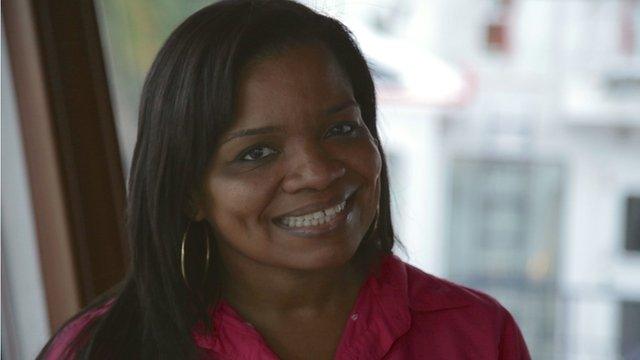Panama Canal at 100: A tale of growth and development
- Published
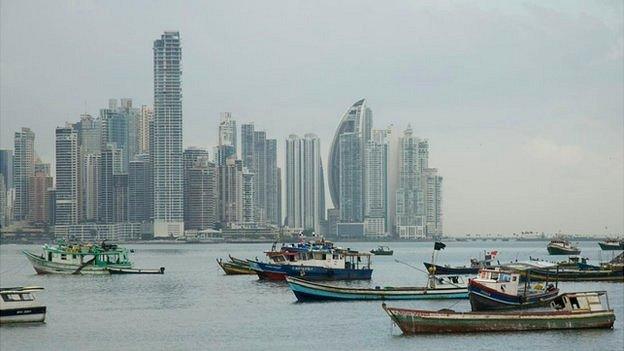
Panama's ambitious skyline and economic growth has led to comparisons with Dubai
The Panama Canal opened 100 years ago. It was a feat of engineering that revolutionised global trade. More than a million ships have passed through the 80km (50 mile) canal in the past century, but what do the next 100 years hold for the waterway and the small Central American country?
If the number of skyscrapers is a marker of a country's ambition, then Panama has set its sights high - Panama City's skyline is full of towering apartment blocks, and newer high-rises are continually going up.
It is sometimes called the Dubai of Latin America, but while Dubai saw its ambitions come crashing down in 2009 after it failed to pay its debts, Panama came out of the global financial crash relatively unscathed.
Since 2008, the country has seen average economic growth of about 8% a year.
Panama's growth though is not evenly spread. There is a stark difference between Panama City and the rest of the country.
According to the World Bank, around a third of Panamanians live in poverty. In the countryside, that figure rises to about 60%.
"It's a country that's moving very fast but on two tracks," says Tomas Bermudez, of the Inter-American Development Bank in Panama.
Game-changer
The engine of Panama's growth comes from the canal.
Panama took control of the canal from the US in 2000, and has since been widely praised with the way it has handled the operation.
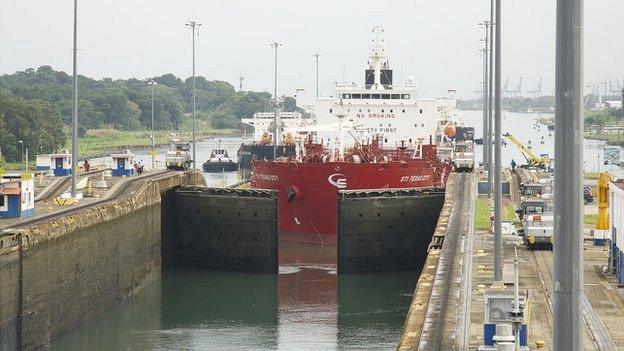
The Panama Canal is a key route in global shipping
Transit fees now bring in about $1bn a year for the government.
"The canal has been such an important driver of growth that the whole domestic industry has been built around that," says Michael Henderson, Latin America economist at Maplecroft in London.
The waterway itself accounts for less than 5% of the economy, but it is the port activity, logistics and shipping services that boost the contribution for the country of just 3.5 million people.
Expansion needed
Although the Canal is significant for Panama, traffic through it accounts for just 5% of global trade. With the nature of that trade changing rapidly, Panama needs to keep up.
You only need to spend a few minutes at the canal locks to see why. Huge container ships squeeze through the lock chambers with just centimetres to spare on either side.
Katy Watson takes a close-up look at the Panama Canal
New supertankers cannot fit through the old locks, which is why the country is spending more than $5bn (£3bn) expanding the canal - a project that, after delays and legal disputes, is now expected to be finished by the end of next year.
"The justification of the expansion was that a new trade pattern has emerged," says Jean-Paul Rodrigue of Hofstra University in New York.
"When China became a global exporter in early 2000s, the Panama Canal started a new type of business, linking China to the US east coast."
At the moment, the biggest ship able to use the canal takes 5,000 containers. After expansion, it will be able to handle ships carrying as many as 12,000 containers and it will double the capacity of ships carrying dry bulk such as sugar and soy.
New rivals
Panama also faces growing competition.
The Suez Canal recently announced plans to widen its waterway. And closer to home, Nicaragua last month unveiled more details about its own canal between the Atlantic and the Pacific Oceans.
But it is still early days for the Nicaragua project.
"It's a project that is technically feasible, but commercially at this point it doesn't make sense," says Jean-Paul Rodrigue.
.jpg)
As for operating the canal, he is sceptical of Nicaragua's track record.
"When you build such an infrastructure project, one of the biggest criteria is trust and political stability," he says.
"The Panama Canal Authority is run like a business and is run very, very efficiently. Nicaragua has a lot of uncertainty."
Panama's healthy economic growth came under the presidency of businessman Ricardo Martinelli. But his was a leadership tainted by accusations of corruption.
New President Juan Carlos Varela has promised to bring change and more transparency.
"He seems to have captured the popular mood in Panama," says Michael Henderson. "His campaign was to clean up politics and it will be what his success is ultimately judged on."
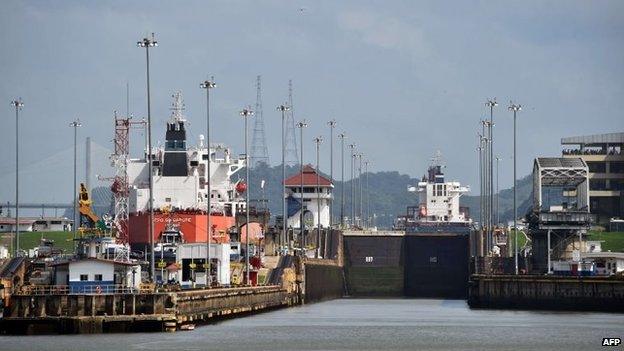
The canal has been key to Panama's economic growth
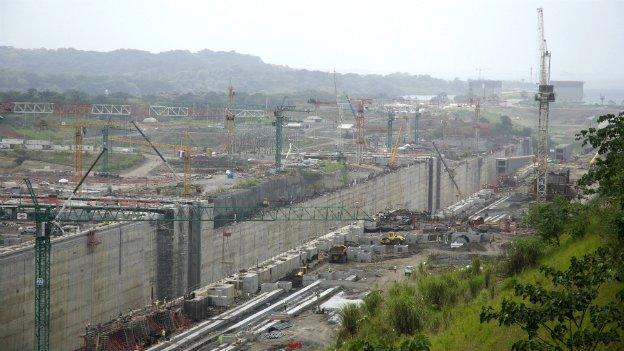
The country is spending more than $5bn (£3bn) expanding the canal

Despite income from the canal, Panama is a country of great inequality
The president will also be judged on how inclusive its future growth will be. The canal expansion will help retain Panama's importance in global shipping but more Panamanians want to benefit from the extra revenues the expansion will bring.
"We have a very modern economy but our political system is not very modern, it's not very representative," says Panamanian economist Horacio Estribi.
"We need to deepen our democracy in order to have more integral economic growth and social growth."
Opposite the Dubai-like skyline, the old colonial part of town encapsulates the country's economic story.
The Casco Viejo, once a run-down neighbourhood, is now experiencing full-scale gentrification - run-down colonial buildings are being given makeovers, and trendy bars, shops and boutique hotels are springing up.
But in amongst the renovated houses you can still meet some of the original residents. It is a neighbourhood where rich and poor live side-by-side. As long as both can benefit from the boom, Panama will be a better place.
- Published5 August 2014
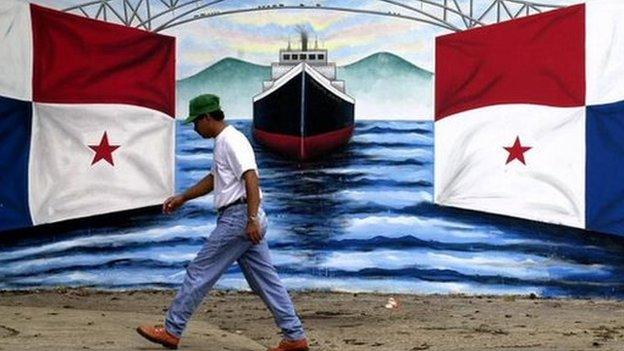
- Published8 August 2014
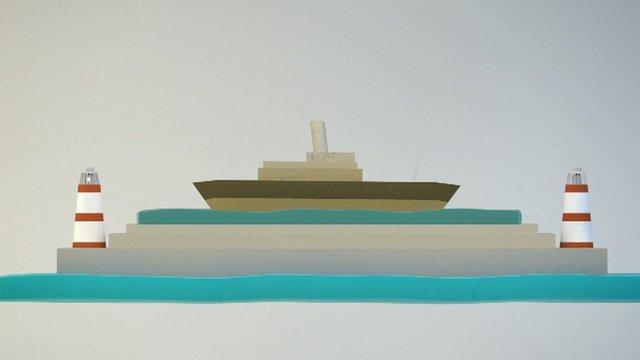
- Published10 August 2014
